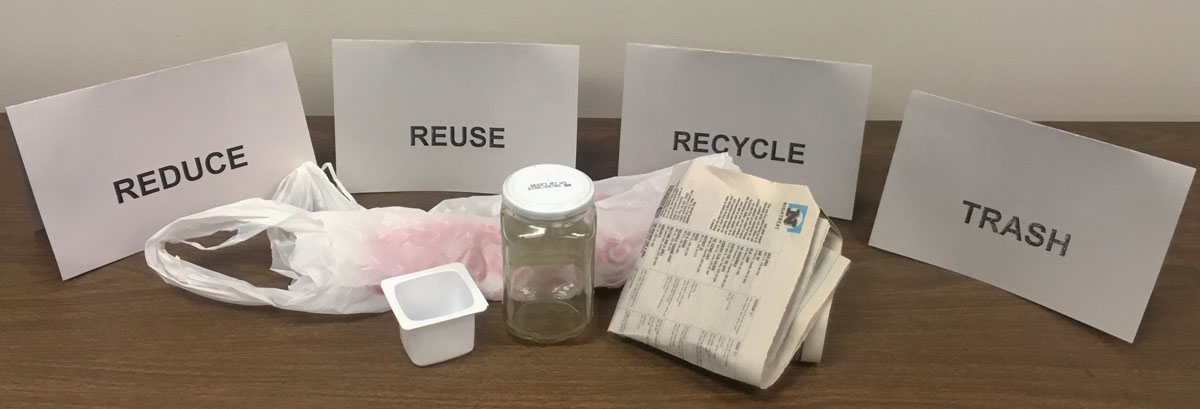Materials:
Procedure:
Engage participants in the understanding that there are different levels of solutions to problems in a community. Individuals can have a particular level of impact when they engage in individual-level solutions. These individual solutions can be amplified when they are shared with others in the community, and can serve to encourage community-level solutions. Community-level solutions have a different level of impact, as they inherently reach a larger number of people. When we think about community-level solutions to waste we might think of container deposit laws (where you pay extra for a beverage bottle, for example, and then get that money back when you return the bottle for recycling or reuse), plastic bag bans, bans on foam food take-out containers, extended producer responsibility laws (where the manufacturer of a product is responsible for its ultimate disposal, recycling, or reuse). Participants may be able to describe other community-level solutions. In this activity participants will consider individual-level solutions, which can be effective and empowering, particularly for young people.
Ask participants to be ready to move throughout the room. Explain that you will be showing them items that might be identified as trash. Ask participants to move to stand near the sign that describes how they would deal with this item in their life. Meaning, they would not buy this in the first place (REDUCE), they would buy it and then REUSE it somehow, they would buy it and then RECYCLE it, they would buy it and put it in the TRASH when they are done with it. Explain that there is no wrong answer, but that they should be able to argue for their choice.
Hold up one of the items and allow time for participants to gather, then ask a few people to explain why they chose to stand where they did. For example they might say, "I would reduce this newspaper because I read my news on the internet." Or, "I like to eat premade pasta sauce but I reuse the jars to store leftovers." If you want, you can give participants a chance to change their choice if they are swayed by someone else's argument.
Think carefully about the trash items you choose to make sure they are items your participants will relate to. You could frame it as them choosing to influence their family members if that is more appropriate for their age.

Learn about plastic pollution and other types of marine debris.
Provides Support for NGSS Performance Expectations: